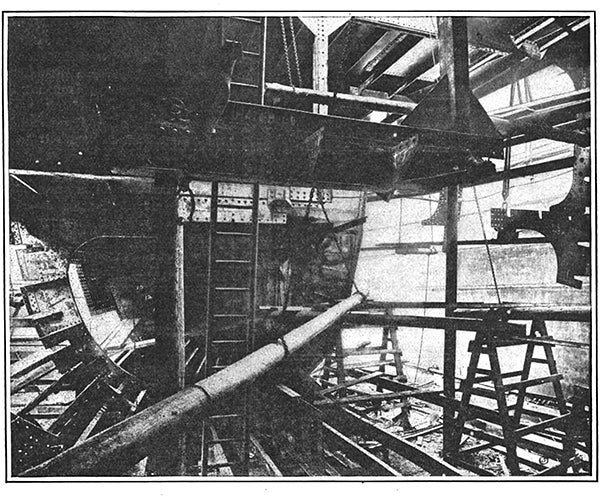This article was published in Scientific American’s former blog network and reflects the views of the author, not necessarily those of Scientific American
Reported in Scientific American, this Week in World War I: October 9, 1915
The first American ship to be torpedoed in World War I, on May 1, 1915, while the United States was still a neutral country in the War, caused an immediate diplomatic outcry and stern warnings to the German government. The other part of the story, reported in the issue of October 9, 1915, was the fate of the ship itself:
“While the incident will perhaps be longer remembered for its serious effect on the then already strained diplomatic relations between the United States and Germany, still the successful repairing of a frail steamer, shattered by a torpedo capable of destroying the mightiest dreadnought [large battleship], is none the less noteworthy.”
On supporting science journalism
If you're enjoying this article, consider supporting our award-winning journalism by subscribing. By purchasing a subscription you are helping to ensure the future of impactful stories about the discoveries and ideas shaping our world today.
The S. S. Gulflight was an oil tanker, 5,189 gross register tons, owned by the Gulf Refining Company, on her way to Rouen, France, stuffed to the gills with lubricating oil and gasoline. Although hit by a single torpedo, the cargo (somewhat miraculously) failed to ignite, and the vessel, although it was badly holed enough that the crew abandoned ship, did not sink. Three Americans lost their lives (one due to a heart attack). The repairs took five months:
“The damage sustained by the ‘Gulflight’ consisted, in the main, of a huge, ragged hole on one side of the hull and a number of smaller holes; the latter being caused by the flying fragments of metal wrenched out of place and flung through the air, piercing the steel plates on the other side. The nature of the holes was such that a large section on both sides of the hull had to be removed. At one time during the work the bow portion of the vessel was almost disconnected entirely from the after portion, only a few beams of the skeleton holding them together.”
The ship, repaired, resumed a regular and less-dramatic role of shipping cargoes of oil and gasoline to the hard-pressed Allies for the rest of the war. Reprising the same role in World War II, the ship was not so lucky, being sunk by a German torpedo in 1942.

Repairing the tanker S.S. Gulflight while in drydock: large steel plates and girders being rivetted in place within the hull.
Image: Scientific American Supplement, October 28, 1916
Our full archive of the war, called Scientific American Chronicles: World War I, has many articles from 1914–1918 on shipping and the naval battles of the First World War. It is available for purchase at www.scientificamerican.com/products/world-war-i/